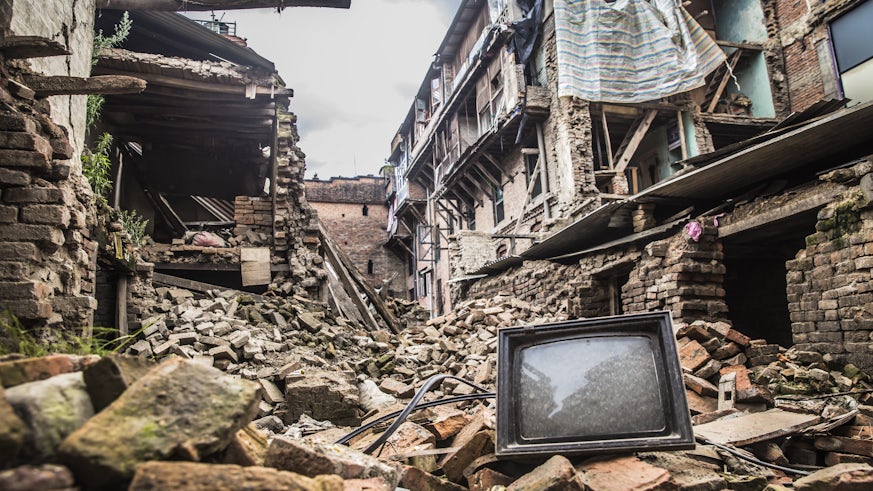Earthquakes in slow motion
2 January 2020

Understanding the gentler earthquakes that we cannot feel may help geoscientists to predict deadly eruptions.
Regular earthquakes occur when rock underground suddenly breaks along a fault - a crack in the Earth's crust that commonly forms a boundary between tectonic plates - causing a release of energy that makes the ground tremble.
While a regular earthquake is a quick slip, a slow earthquake occurs when faults grind incredibly slowly against each other. They can last for weeks, months or sometimes even years. Slow earthquakes frequently move through the Earth, and no one feels a thing. Because they occur deep in the earth and release energy so gradually, there is minimal impact at the surface, even when an area of thousands of square kilometres is affected.
Dr Ake Fagereng from Cardiff University’s School of Earth and Environmental Sciences and his colleagues are especially interested in the relationship between the two types of tremors and the conditions that cause them, which they are investigating as part of a project called MICA.
Dr Fagereng said, 'If we can figure that out, then we can hopefully understand whether those conditions can change so that an earthquake speeds up.'
The team have been drilling into an offshore area in New Zealand that experiences slow earthquakes, as well as visiting regions in Japan, Namibia, Cyprus and the UK that would have experienced them in the past. Slow quakes occur deep below the surface of the Earth, which is hard to study, so the researchers have chosen areas that were once at the appropriate conditions but are now at the surface.
'We are looking for structures that formed (as a result of slow earthquakes) and what they tell us about how the rocks accommodated that slip. We are hoping to get somewhere on what the relation is between slow earthquakes and regular earthquakes, which could potentially feed into models that predict the size of earthquakes occurring in different regions,' said Dr Fagereng.
Their theory is that slow earthquakes occur when tiny, continuous movements in a fault, known as creep, accelerates throughout the fault zone. Their field observations showed that a fault could be made up of different rock types of varying strength and thickness, such as solid basalt and granite and weaker clay-rich sediment. They suspected that stronger rocks start to fracture as creep speeds up due to weaker rocks moving around them.
Using information from their fieldwork, they have developed a mathematical model to reproduce their theory and describe some of the physics behind it. A mixture of rocks with different deformation styles, such as breaking or bending, is essential. A proportion of creeping weak rock is required, as well as high enough pressure to cause some rock to rupture.
'A possibility for these slow earthquakes is that you have a thick creeping zone with embedded stronger rock,' said Dr Fagereng.
Dr Fagereng thinks that findings from the project could help improve earthquake and tsunami forecasting, which can be used to protect against dangerous ruptures.